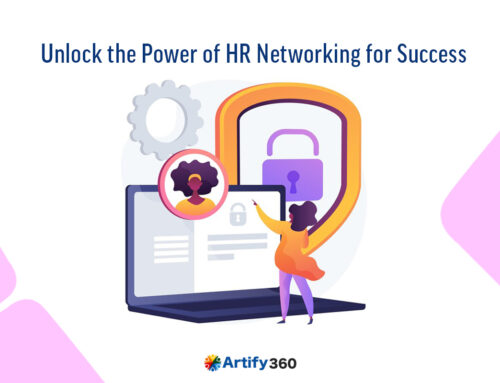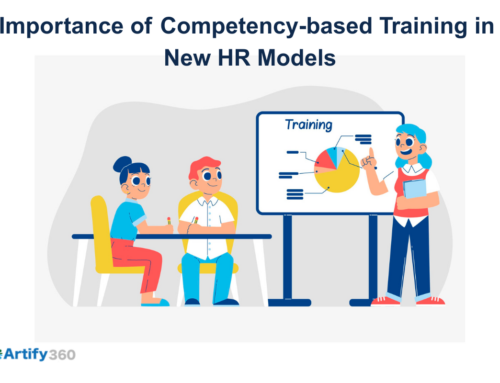The concept of a hybrid work culture is rapidly evolving across industries. Though different organizations follow the nomenclature of hybrid working according to their specific rulebooks or policy statements, the core idea remains the same. If your business has to deliver the best hybrid work environment matching the employee needs and organizational goals in equal measure, opt for technological innovations.
HR technology is the optimum solution for delivering an essential hybrid workplace culture, meaning that it boosts your organization’s productivity and profile. This article mentions the role of HR technologies and processes in developing a sensational hybrid working model for improving your business prospects.
Hybrid Work & Its Impact on Business Cultures
There is no one-stop solution for understanding the domain of hybrid work cultures. A particular model’s impact on business aspirations will thoroughly depend on the type of hybrid structure that is implemented. Take a look at the top preferred hybrid work models, and you will get the gist.
- General hybrid model
A general hybrid model is the most basic and top-adopted form of hybrid work culture in organizations. In this format, you have different employees working in various modes as per the organization’s decision and HR personnel’s briefing to the resources. Some staff members may be working remotely or from home, while others may be working from the office environment. Other contractual roles and external partner profiles may or may not be present in this model.
This type of hybrid model is on the rise globally. It is easy to implement the system and contribute to the business entity’s mission and values. HR processes under this category are straightforward, enabling safer and more feasible execution. You can also utilize this system to promote the standardized growth potential of a business firm.
- Split models
The idea of split operations models is plausible considering its exclusive set of benefits. In a split hybrid model, all types of employment types are included. The major distinction here is that instead of fixing resources for various job types, you can use the employment tag on randomly picked employees. It means that any employee is liable under the organizational terms to work under interchangeable terms. They could be working in office space, from home, or at remote distances based on the particular workflow or project. HR leaders decide these scenarios.
Split hybrid models are effective in dynamic work environments and businesses achieving growth rates at a quick pace. Vibrant employees with high adaptability levels are preferable to execute this model. It is mostly utilized by new-age companies and startup units with an inclusive strategy for wider technology scales.
- Remote-first model
Here, the priority of HR authorities is given to enabling and employing employees or human capital resources working in remote mode. The concept does not demotivate the work-from-office option. However, it helps organizations progress to a more active remote working or work-from-home model where more resources are placed. A remote-first model dedicates more resources and organizational support to creating assistance for employees working from locations other than offices.
Startups and upcoming business units are the primary wellwishers of the remote-first model. Resources under multi-tasking mode can also grow if they follow this particular category. In the future, the remote-first model will be the most embraced category that organizations will pursue for the longer term.
- Office-first model
This model reminds the most about the traditional HR system where work-from-office is given prior relevance. Employees are mostly supposed to work directly from an office workspace or field profession environment. Remote and hybrid work options surely exist but are mostly seen as part of the employee benefits package rather than a mode of workflow preferred by the resources.
Even if the office-first model is generally identified with traditional industries and business units, newer business models can opt for this if they feel so. The benefit is that task management from the existing workspaces and office systems will be given sufficient value.
- Personalized models
Considering the growth of technology and innovative HR models, the idea of a personalized work model is not far-fetched. These custom workflows are seen as operational tactics based on unique HRMS provisions demanded by the specific industry’s competing marketplace conditions. Under the customized working model niche, you can arrange any business model type that seems fit for the existing employees and potential incoming resources.
The pattern of a personalized working model applies to any business or organization. However, the most influential business models that can utilize the working model are modern, streamlined ones that can collaborate with the latest technological advances and integrate with any innovative channel, portal, or tool that confirms ease of operations.
Benefits of Hybrid Work Models
Unique advantages are present in a hybrid working model if executed with a panache. Given below are a few of the sought out merits of hybrid models:
- Team-building and collaboration
In a hybrid working model, it is easy for you to mix it up with numerous operations types and HR workflows. It will enable you to manage a crucial alignment between organizational goals and human capital resource requirements. Of most prominent note here is the team-building and collaboration virtues.
- Employee engagement tactics
In hybrid models, employee engagement can be explored using unique strategies. You can try a trial and error method until the optimum resource management and engagement model reflecting the best-case scenario for your business entity is found. You may even discover innovative employee engagement models in this case.
- Significant security support
Privacy, security, and data plus personal information safety is key for any employee to feel in harmony with their workspaces. Hybrid work models are capable of delivering such effective strategies to create a vital security model for all your organizational activities and approaches.
- Fast-paced operational objectives
In a hybrid working type, the operations within the organization will receive an innate boost in the form of quicker reporting, analysis, identification, and implementation processes. It will enable you to constantly receive feedback and grow an essential operations model that strives to achieve the best business results.
- Aids in a performance boost
The working model in an organization is directly proportional to the performance quotient of employees. But what’s even more important is to recognize that it will contribute to an employee’s work-life fit metrics. If you are an HR leader planning to implement ideal work cultures, employ hybrid models to promote an improvement in the performance of your resources.
- Better communication flow
Communication and interpersonal skills are two of the most relevant techniques under the basic employee experience category that will help build organizational tasks. Hybrid systems can deliver a comparatively efficient communication flow between employees owing to their better wellness levels within the business model.
- Optimum employee-employer equation
In a hybrid working solution, the gap between the employees and employers will be less and works as an adequate technique for developing better mutual relationships. Optimum levels are promised here, paving the way for new inroads in harmonious work environments promoting the welfare of both resources and authority personnel.
- Risk mitigation
A hybrid working model of operations provides the capacity to mitigate certain risks playing a part in an organizational structure. The working extent of this benefit varies by industry, organization type, market positioning, etc. Still, it will ease the job of concerned authorities in creating a robust working process.
- Authentic & productive workforce
Hybrid models will follow a working structure that more resembles and fulfills the interests and passion of your employees. It will mean that they can stay more authentic in their respective professional profiles and help boost the productivity of the organization’s workforce.
- Flexible organizational workflow
The concept of hybrid working meaning connects well with the keyword flexibility. When your employees are experiencing a better organizational role in terms of their individual and collective experiences, the flexibility of the company’s workflow status will significantly improve.
Introducing HR Technologies for Hybrid Work Practices
All things considered, the best option to develop a hybrid working model and business practice for your organization is with the support of dedicated HR technology. The below points will further explain this fact:
- The hybrid work model is quick to implement and undergo major upgrades. Owing to this factor alone, an automated HR or operations technology is necessary to keep the whole process in check.
- If an HR technology solution like software services or digital platforms is taking care of your hybrid model provisions, robustness is guaranteed.
- You can reset or reboot your HR software system as much as you need without disrupting the core hybrid workflow in your organization.
- It is easier to create a prototype for an innovative technology model and test it compared to traditional systems. Digitized HR technology solutions ensure the implementation of this structure.
- With the appropriate execution of an HR technology platform or product for meeting your hybrid model-building needs, it is possible to manage an integration model with other HR or operational requirements. These integrations will be both streamlined and secure, following a seamless collaboration process.
- A hybrid work culture in HRM is the future of working operations models. HR digital services are the optimal solution to bridge the gap between existing and upcoming operations processes. You can improve your organization’s branding and connectivity with properly managed HRMS suites.
- Many hybrid tools are being generated at a fast pace. When you have digital HR technology taking care of the inception of such tools, it helps you adapt better to the changing times.
Artify 360 – A Proven HRMS Device for Meeting Your Hybrid Working Objectives
When you check the above hybrid working model evolution and the role of HR technology in monitoring the same, it is clear that a full-fledged one-stop solution should be actively placed in your organization to implement specific tasks with ease. Artify 360 cloud HR software is that solution, with testimonies for hybrid work model implementation in countries of the Middle East, including Dubai, Saudi, Bahrain, Qatar, etc.
Artify 360 HR payroll software is a proven SaaS product that can enable your organization’s hybrid working model aspirations and empower the business with a solid HR technology unit. If you need more information on how a hybrid business model works for your specific organization or why Artify 360 is the ideal platform to meet those objectives, reach out to the internal team. You can also book a free demo session to understand the HR software system’s personable implementation techniques.






